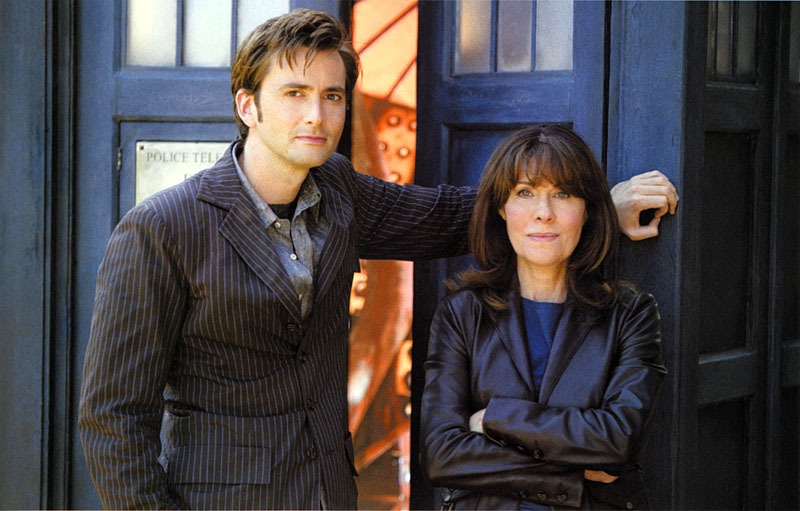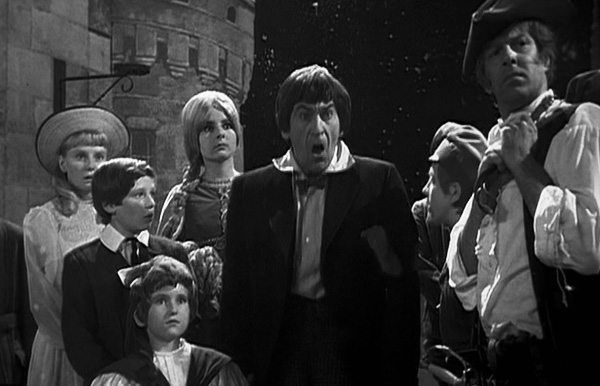In the year 2020, it’s possible for fans of Doctor Who to have never known a world where the show was off the air for more than a year. Many fans remember watching Eccleston’s Ninth or Tennant’s Tenth Doctors as children, growing up with the show constantly in reach. If you’re one of those people — first off, I envy you so much.
Thanks to Day of the Doctor and the series’s general nods back to its early days, it’s unlikely for even the newest fan to be unaware of Doctor Who‘s previous iterations. It was different in a lot of ways, but still the same deep down. Thanks to that, a lot of fans unfamiliar with the show pre-2005 want to get into it… which is, understandably, a daunting prospect.
It’s understandable. Even long-time fans are still making their way through the 20th century catalog… partly because the BBC is still finding and restoring missing episodes, but also because there’s so much. From the outside, it can look like a great big sci-fi club sandwich, with no indication of where to bite in first. Fortunately, I have good news: not only is it easier than you think, you’ve also stumbled across an article written by someone who will move heaven and earth to make it easier still.
Ready to dive in? Here’s what to know:
Worry less about story arcs.

Doctor Who has continuity for sure. (We’re constantly arguing over it, after all.) But, as with television in general, “arc stories” and seasons where you can’t miss a week without being completely lost are more an invention of modern television. Easing your way into the events of Classic Who is a bit more, well, easy.
The stories played out as mini-serials within the whole, usually 4-6 episodes long. (More on that later.) But, with a few exceptions like “The Key to Time” or “Trial of a Time Lord,” it’s relatively easy to pick a serial and jump in. In other words, you have a little more flexibility with where to jump in. You could start all the way back at An Unearthly Child (and if you do, that’s awesome), but you don’t have to.
Seek out a familiar face.

21st century Doctor Who hasn’t lost its love for the old days. With Daleks, Cybermen, and other classic monsters showing up all over the place, there are threads feeding backwards into its own history in every season. Plus, there’s the occasional look-in from or mention of Classic companions!
If you catch yourself really liking one of these appearances, that can be a great way to start. Curious about the Daleks and Davros? Check out Genesis of the Daleks. Loved School Reunion? Watch The Time Warrior and see how the Doctor and Sarah Jane Smith first met. Curious about the Master? Check out Roger Delgado debuting the villainous Time Lord in Terror of the Autons.
Do some Doctor-matching!

Every Doctor has their own style and flair. If you have a favorite from the current run, you might be able to narrow down a Classic Doctor you’ll love, too!
Love the Ninth Doctor? Look into the very first: the mysterious, harsh but heartful Hartnell. Ten fans will recognize his toothy goofiness in the Fourth Doctor, but will also want to look into Tennant’s own fave (and now father-in-law), Fifth Doctor Peter Davison. Matt Smith pulled inspiration from Patrick Troughton’s Second Doctor, and you’ll see the same high-contrast light and dark sides in Eleven as in McCoy’s Seventh Doctor. If you’re a Twelve fan, look to the scientifically-minded Third Doctor, as well as the abrasive but loving Sixth. And if you’re into Whittaker’s run as 13, you might like Davison’s Fifth Doctor, too.
Yes,the pacing really was slower.

If you start watching a serial and feel like it’s dragging, it’s not just you. Just as TV changed in terms of story arcs, it’s also different in terms of pacing. Stories that might span three or four hours in the show’s Classic run could be as short as 45 minutes now. It’s really a function of what the show was vs. what it became. That much difference in style would be enough to throw anyone off.
When it first came into being, Doctor Who bridged the gap between daytime children’s television and the grown-up programming of late in the day. It brought parents into the living room while giving kids one last show for the day. Episodes were about 25 minutes long, and they ended on cliffhangers. In the age of streaming, sitting down to a serial would be like sitting down to a movie; but the pacing and cliffhanger endings gave audiences that week-to-week thrill while expanding a storyline out for a few weeks.
The good news is, you can skip the “Previously On” segments and get right into each new bit of story. Just rest assured, you’re not wrong in noticing the pacing change; and you tend to get into the swing of it eventually.
Want more info? Grab a book!

Doctor Who has always been a very “current” show. Just as modern episodes touch on real-world issues and reference pop culture, Classic stories did the same. Audiences of the time would understand, of course; but 21st century viewers might lose something in translation. Fortunately, there’s help for that!
The Black Archive from Obverse Books is a series of novella-length examinations of Doctor Who episodes old and new. Each approaches their story from different angles, whether it be story analysis or actual production. There are new ones coming out all the time, so you’ll likely be able to find something based on whatever you’re looking to watch. Plus, the series covers modern Who, too!
Ready? Here are a few places to start:

You probably have more than enough information to start picking your own Classic Who stories to start with, but here are a few specific titles, just to send you on your way:
City of Death: One of the best-loved Doctor Who episodes ever made, and the first ever made on location outside the UK. The Fourth Doctor and fellow Time Lord Romana get tangled up in an ancient alien plot that involves Leonardo da Vinci and multiple copies of the Mona Lisa. The episode was written by “David Agnew” (a.k.a. Hitchhiker’s Guide to the Galaxy writer Douglas Adams, with fellow Who writers David Fisher and Graham Williams), and featured a cameo from Monty Python’s John Cleese.
Doctor Who (1996): The contentious movie was originally intended as a pilot for a US/UK revival of the series, starring Paul McGann as the cheerfully Byronic Eighth Doctor. While it didn’t take, much of its format contributed to what the modern series would become. Also, Eight is great.
The Edge of Destruction: If you want to go way back in time, give this one a go! This serial clocks in at a tight 45 minutes, and pits the first-ever Team TARDIS against each other in some serious psychological drama. And this was written to be a filler story!
Time to get watching — hit up Amazon or BritBox and enjoy!


Comments are closed.